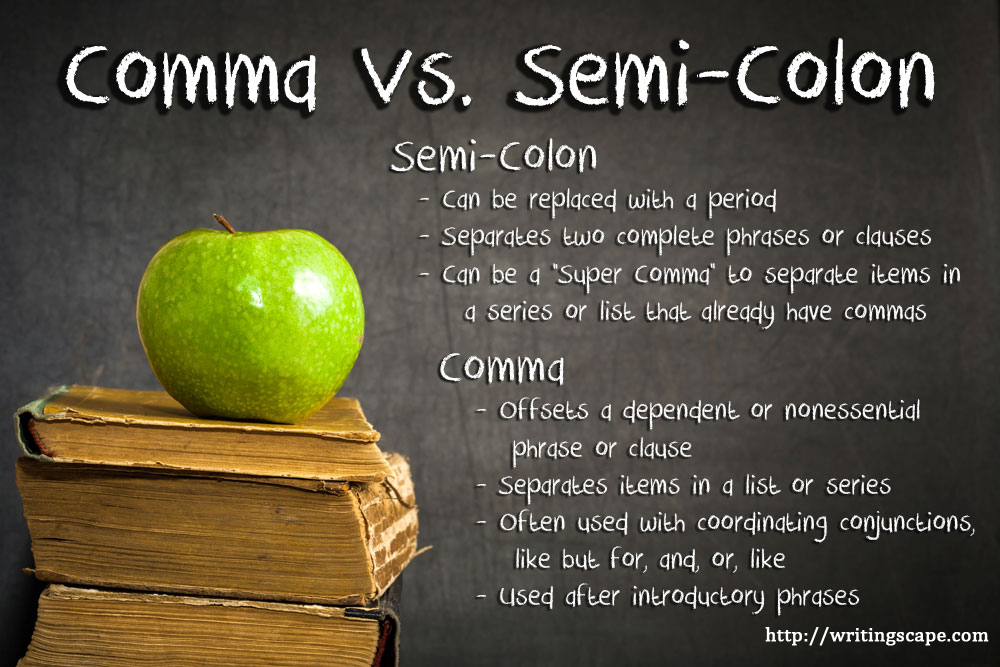Comma vs Semicolon – Commonly Confused Punctuation
One of the most common errors that writers make comes from using the wrong punctuation. Commas and semi-colons are often misused, where you might accidentally use a comma instead of a semi-colon, or visa versa. Overcoming this issue will make for stronger writing and greater clarity for your reader.

Commas
Commas can be considered a “soft pause” in writing. When you read your writing out loud, you may be able to predict when a comma is needed based on the overall flow of the sentence. Here are a list of instances when you would use a comma:
- To separate items in a list. Example: I am going to the store to pick up eggs, milk, bread, and cheese. After that, I plan to go shopping, visit my mom, and water my garden.
- To separate two independent clauses in a compound sentence with a coordinating conjunction, where each side of the sentence could be its own sentence. Coordinating conjunctions include the seven joining words but, and, for, or, so, yet, or nor. Example: I changed my mind, but it was too late.
- To separate two or more adjectives before a noun where the comma could be replaced by “and.” Example: I hate the smell of wet, dirty dogs.
- To offset an introductory phrase. Example: After we washed the dog, he ran right back outside and rolled in the dirt. In the end, we were as wet and dirty as he was.
- To offset a dependent or nonessential phrase/element that is not necessary to the meaning of the sentence. Example: My instructor, an avid fan of Lord of the Rings, insisted we read every book by Tolkien. She even insisted we read The Hobbit, a prequel to the series.
- Examples of nonessential elements includes interrupters (of course, however, nonetheless), renamers (appositives), nonessential adjective phrases, and nonessential adjective clauses.
- You can tell it is nonessential if you can remove it from the sentence and the sentence still makes sense.
Semi-Colons
Semi-colons are often used in place of a period, but they are also used as “summer commas” when needed. People often overuse semi-colons as a replacement for a comma. However, semi-colons are only used in a few scenarios:
- To link two independent clauses that could be separate, independent sentences. Example: I like to use bouillon cubes when making a broth; other people use pre-made broth.
- To link clauses connected by a conjunctive adverb or transitional phrase. Example: I picked out my favorite flowers for the garden; as a result, I have fresh flowers for my dining room table every day.
- To link where items in a series contain commas. Example: Tomorrow, we are hosting a party of interesting guests: Sarah, a lawyer; Jonathan, a cowboy; Laura, a professional chef; and Jessica, an actress.
- To link length clauses or clauses with commas to avoid confusion. Example: My chili contains sausage, beef, vegetables, beans and lots of seasonings; but a classic Texas chili doesn’t contain tomatoes, beans, or other vegetables.